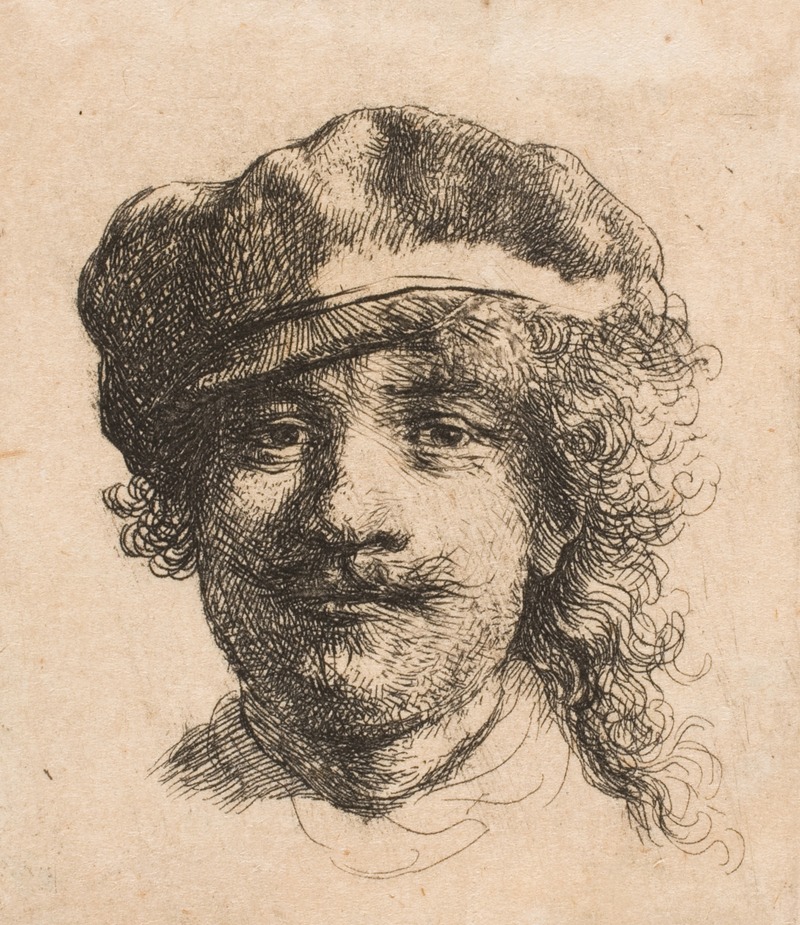
Rembrandt wearing a soft cap
A hand-painted replica of Rembrandt van Rijn’s masterpiece Rembrandt wearing a soft cap, meticulously crafted by professional artists to capture the true essence of the original. Each piece is created with museum-quality canvas and rare mineral pigments, carefully painted by experienced artists with delicate brushstrokes and rich, layered colors to perfectly recreate the texture of the original artwork. Unlike machine-printed reproductions, this hand-painted version brings the painting to life, infused with the artist’s emotions and skill in every stroke. Whether for personal collection or home decoration, it instantly elevates the artistic atmosphere of any space.
"Rembrandt wearing a soft cap" is a self-portrait by the renowned Dutch artist Rembrandt van Rijn. This painting is one of the many self-portraits created by Rembrandt throughout his prolific career, showcasing his exceptional skill in capturing the human condition and his own likeness. Rembrandt, born in 1606 in Leiden, Netherlands, is considered one of the greatest visual artists in the history of art and the most important in Dutch art history.
The self-portrait is notable for its intimate and introspective quality, a characteristic feature of Rembrandt's self-portraits. In this work, Rembrandt depicts himself wearing a soft cap, which adds a casual and approachable element to the portrait. The soft cap, a common accessory during the 17th century, is rendered with meticulous attention to detail, highlighting Rembrandt's mastery in portraying textures and fabrics.
Rembrandt's self-portraits are significant not only for their artistic merit but also for the insight they provide into the artist's life and psyche. Over the course of his career, Rembrandt painted, drew, and etched nearly 100 self-portraits, which collectively offer a visual autobiography. These works document his evolution as an artist and reflect the personal and professional challenges he faced, including financial difficulties and personal losses.
The painting is executed with Rembrandt's characteristic use of chiaroscuro, a technique that employs strong contrasts between light and dark to create a sense of volume and three-dimensionality. This technique is evident in the way Rembrandt's face is illuminated against a darker background, drawing the viewer's attention to his expressive features. The subtle play of light and shadow across his face reveals his skill in capturing the nuances of human emotion and expression.
Rembrandt's self-portraits are also notable for their psychological depth. In "Rembrandt wearing a soft cap," the artist's gaze is direct and contemplative, inviting viewers to engage with him on a personal level. This introspective quality is a hallmark of Rembrandt's work, setting his self-portraits apart from those of his contemporaries.
The painting is believed to have been created during a period when Rembrandt was experiencing both professional success and personal turmoil. Despite the challenges he faced, his self-portraits from this time continue to demonstrate his unwavering commitment to his craft and his ability to convey profound human experiences through art.
Today, Rembrandt's self-portraits, including "Rembrandt wearing a soft cap," are celebrated for their technical brilliance and emotional resonance. They are housed in major art collections and museums around the world, where they continue to captivate audiences and inspire artists. Rembrandt's legacy as a master of self-portraiture endures, and his works remain a testament to his extraordinary talent and insight into the human condition.


















